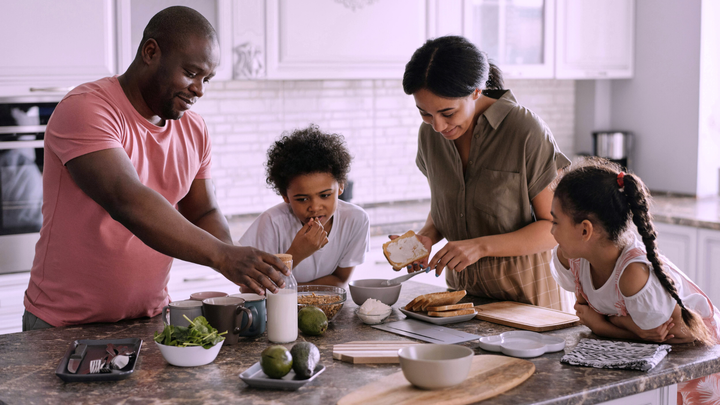Transform Your Child’s Mindset with Positive Thinking Exercises

Imagine kids approaching challenges with courage, bouncing back from setbacks gracefully, and finding joy in the little things. Sounds ideal, right? Science says it's possible, and it starts with teaching kids the power of positive thinking. Positive thinking exercises for kids are more than just feel-good activities; they're tools that build emotional resilience, enhance social connections, and shape lifelong mental health.
In this guide, we'll explore simple, evidence-based strategies to help kids foster optimism and self-confidence. Whether you're a parent, teacher, or caregiver, these exercises are your pathway to nurturing a brighter, bolder mindset in the next generation.
Why Positive Thinking Matters for Kids
Let's start with the brain. Neuroscience tells us that kids' minds are like active construction zones, constantly building and reshaping neural pathways. This phenomenon, called neuroplasticity, means that the more kids practice positive thinking, the easier it becomes for their brains to default to optimism. In short, positive thinking isn't just a mindset; it's a skill that can be trained.
Research also shows that positive thinking during childhood lays the foundation for emotional intelligence, better problem-solving skills, and stronger relationships. It's like giving kids a mental toolbox filled with strategies to handle life's curveballs.
Fun and Effective Positive Thinking Exercises for Kids
Gratitude Journaling
Gratitude is like a magic lens that helps kids focus on the good. Encourage your child to jot down or draw three things they're thankful for each day. It could be as simple as “Mom's pancakes” or “the way the sun feels on my face.” Studies show that gratitude journaling not only boosts happiness but also strengthens social skills. Bonus: It's a great bedtime ritual to wind down and reflect.
Visualization Adventures
Take kids on a mental mini-vacation with visualization exercises. Ask them to close their eyes and picture a happy place—maybe a beach with soft waves or a treehouse filled with their favorite books. Use sensory cues like “Can you feel the sand under your toes?” or “What does the air smell like?” This practice reduces anxiety and helps kids approach challenges with confidence. For structured guidance, consider the Visualization Exercises for Kids offered in the Conqur App, which provides tailored scenarios to build focus and creativity.
Mindfulness Through Breathing
Teach kids the “Balloon Breath” technique to calm their minds. Have them imagine their belly inflating like a balloon as they inhale deeply and deflating as they exhale. This simple exercise is a game-changer for managing stress and improving focus, especially during hectic school mornings or before tests.
Positive Self-Talk Practice
Kids can be their own worst critics, but you can flip the script with positive self-talk. Create a “thought filter” activity where they write down negative thoughts (like “I'm not good at this”) and replace them with empowering ones (like “I'll get better with practice”). Over time, this exercise teaches them to be their own cheerleaders. Tools like the Commitment Card from the Conqur App can help document these affirmations, adding accountability and motivation to the process.
Creative Positivity Activities
Make positive thinking hands-on with activities like crafting “affirmation cootie catchers” or designing posters with uplifting quotes. Not only do these activities reinforce optimism, but they also allow kids to express themselves creatively. Plus, who doesn't love a good arts-and-crafts session?
How Parents and Teachers Can Foster Positivity
Kids don't learn positivity in isolation, they mirror the adults around them. Parents and teachers play a key role in modeling optimistic behavior and creating environments that encourage growth.
At home, you can foster positivity by celebrating small wins and reframing failures as learning opportunities. For example, instead of saying, “You failed the test,” try, “This is a chance to figure out what we need to work on together.”
In the classroom, educators can use group activities that promote teamwork and empathy, like sharing daily affirmations or practicing gratitude as a class. Collaboration between parents and teachers ensures that kids receive consistent messages about the value of a positive mindset.
Balancing Positivity with Realism
Here's the thing: positivity doesn't mean ignoring tough emotions. Kids need to know it's okay to feel sad, angry, or frustrated. The goal is to teach them how to process these emotions constructively.
One effective approach is using the “guest house” metaphor, imagine your mind as a house where emotions come and go like guests. Some stay longer than others, but none are permanent. This teaches kids that negative feelings are temporary and manageable.
The Ripple Effect of Positivity
When kids embrace positive thinking, it doesn't just benefit them, it spreads to those around them. Optimistic kids tend to form stronger friendships, contribute to supportive classroom environments, and even inspire adults to see the world through a brighter lens.
By investing in positive thinking exercises for kids, you're not just shaping their future; you're creating a ripple effect of resilience and joy that can transform families, schools, and communities.
Ready to help your child shine? Start small, try a gratitude journal tonight or a “Balloon Breath” exercise tomorrow morning. You'll be amazed at how these little changes can make a big difference.
Take your efforts a step further with the Conqur App. Its tools like the Habit Tracker with Streaks and Achievement Dashboard can make building positivity and consistency fun and rewarding. Download it today to unlock your child's full potential!


